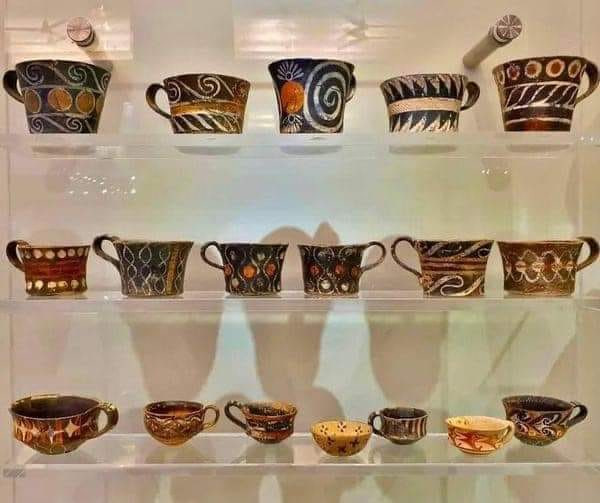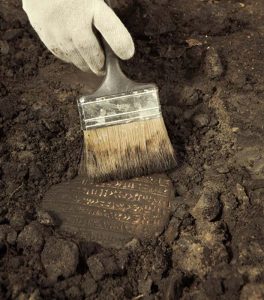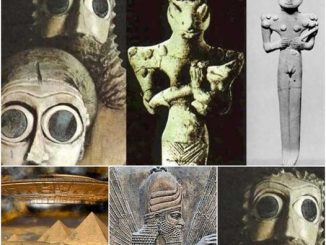The Minoan civilization, flourishing from around 2600 to 1100 BC on the island of Crete, remains one of the cornerstones of European antiquity. Known for their architectural innovations, frescoes, and pottery, the Minoans left behind artifacts that continue to intrigue and inform. Among their most fascinating contributions are the Minoan ceramic mugs, used predominantly for wine and produced between 2200 and 1900 BC. These artifacts offer a glimpse into both the daily life and extensive trade networks of one of Europe’s first advanced civilizations.

Functionality and Artistry Combined
Minoan ceramic mugs are not merely utilitarian objects; they are also pieces of art that reflect the sophistication of their creators. Crafted from clay, these mugs were central to everyday life in Minoan Crete, primarily used for drinking wine—a practice that played a significant role in social and religious contexts. The mugs vary in size, shape, and design, indicating a culture that valued both function and aesthetic appeal.

Archaeological Importance
The discovery of thousands of these clay and ceramic cups in archaeological sites across Crete has been pivotal for understanding the Minoan civilization. These artifacts help archaeologists assign relative dates to the strata of their excavation sites due to their evolving styles and motifs. The restless sequence of rapidly maturing artistic styles not only reveals the Minoans’ pleasure in novelty but also reflects broader changes in the society.
Minoan Pottery: A Tool for Dating
Minoan pottery serves as a crucial tool for dating the silent epochs of the civilization’s timeline. Through the study of these artifacts, historians and archaeologists can track the progression of Minoan art and culture, observing how it evolved and interacted with other contemporary societies. The mugs, often found in domestic settings, highlight the Minoans’ skills in pottery and their taste for intricate, vibrant designs.

Trade and Cultural Exchange
The widespread distribution of Minoan pots that contained oils and ointments, exported from Crete as early as the 18th century BC, underscores the extensive trade networks maintained by the Minoans. These artifacts have been uncovered not only on the Aegean islands and mainland Greece but also in distant lands like Cyprus, coastal Syria, and Egypt. This distribution map points to the Minoans’ advanced seafaring capabilities and their interactions with other ancient civilizations, facilitating cultural and commercial exchanges.

Artistic Peaks: Kamares Ware and Marine Style
The pinnacle of Minoan ceramic artistry is seen in the Kamares ware and the “Marine style,” which came later. Kamares ware is distinguished by its dynamic color contrasts and intricate patterns, often featuring floral and geometric designs that are executed with a finesse that reflects the peak of Minoan ceramic art. The Marine style, characterized by its all-over patterns depicting sea life, marks the late phase of Minoan pottery and showcases the civilization’s deep connection to the sea.

The study of Minoan ceramic mugs opens a window into the rich history of a civilization that significantly influenced the cultural landscape of the Mediterranean. These artifacts are not only remnants of the Minoans’ daily lives but also symbols of their artistic excellence and their wide-reaching interactions across the ancient world. As such, Minoan pottery remains a key element in unraveling the history of ancient European civilizations, providing insights into a people who balanced utility with an unmatched flair for design.








